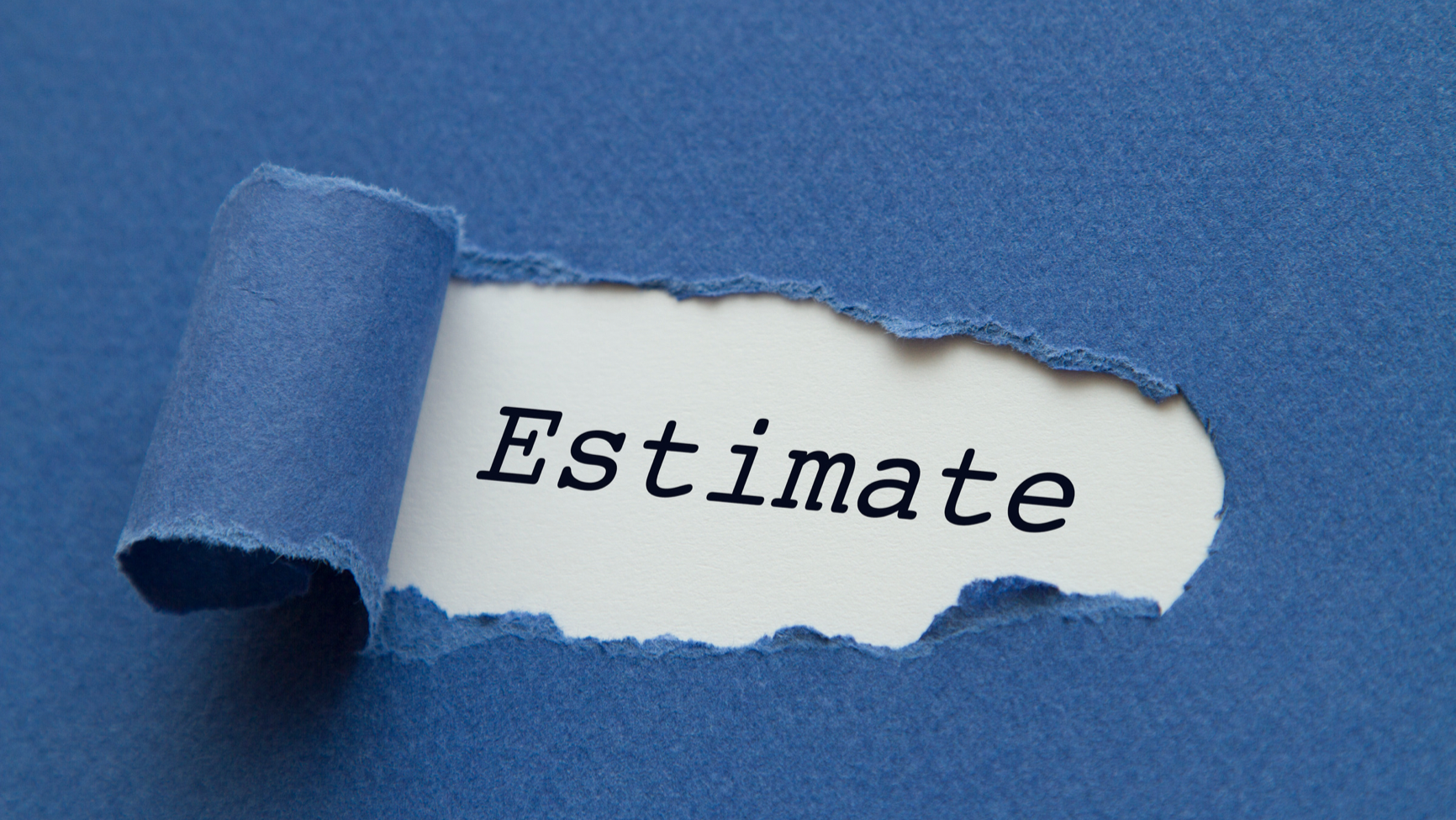A home loan estimate is full of moving parts controlled by the applicant, the service provider, and the lending institution. Let's not forget that the Consumer Financial Protection Bureau (CFPB) also plays a big role. While it's impossible to cover every detail that goes into creating a loan estimate, it's important for every loan officer to grasp the gravity and importance of this document. Here's a refresher guide to loan estimates that will make it all click for you!

What Is a Loan Estimate?
"A loan estimate is a three-page form that you receive after applying for a mortgage," shares the Consumer Financial Protection Bureau. A loan estimate lays out all of the key pieces of information a borrower needs to understand how much a loan will really cost. Uniformity and clarity are required by law because loan estimates are designed to make it easier for borrowers to compare loans from different lenders.
Loan estimates are provided within three business days of applying for a mortgage. Of course, a lender isn't obligated to submit a loan estimate if they reject an applicant based on lacking qualifications, fraudulent information, or any number of other valid factors. That doesn't mean the borrower won't hear from the lender again. All lenders are required to provide borrowers with written notice detailing why an application was rejected.
Loan estimates are valid for 10 business days after they are sent. Lenders have the right to change terms after that window. If a borrower decides to move forward, they'll be required to submit additional financial paperwork for the next phase of loan approval.
Information That Is Required for a Loan Estimate
Lenders don't have much room for creativity on loan estimates. The key pieces of information that must be included on a loan estimate include the estimated interest rate, the monthly payment, and total closing costs. The estimate should also include estimated costs related to taxes and insurance.
In addition to detailing what a borrower can expect to pay for a loan today, a loan estimate must also detail how any fluctuations in rates or payment terms could alter monthly payments. Here's a checklist of all the fields that should be covered in a standard loan estimate that is submitted to a borrower:
- Lender's name and address.
- Borrower's name and address.
- Property address.
- Sale price.
- Loan term.
- Loan type.
- Purpose of loan.
- Loan ID number.
- Loan estimate date.
- Rate lock information.
- Loan terms: Loan amount, interest rate, monthly payment for principal and interest, prepayment penalty, balloon payment.
- Projected payments: Principal and interest, mortgage insurance, estimated escrow, estimated taxes and insurance, total closing costs for the loan, and estimated cash to close.
- Closing cost details: Application, underwriting, and loan points.
- Operational/services charges: Appraisal fee, credit report, flood determination fee, flood monitoring fee, tax monitoring fee, tax status search fee, pest inspection fee, survey fee, and title fees.
- Other costs: Recording fees, transfer taxes, homeowner insurance prepaid premium, mortgage insurance prepaid premium, prepaid interest, and prepaid property taxes.
- Escrow payment at closing.
While compiling all of this information into a document seems like a hefty amount of work, providing a loan estimate is not a billable service. The only fee that a lender can ask for prior to providing an applicant with a loan estimate is a fee to cover the cost of accessing a credit report. In addition, borrowers have no obligations to accept a loan offer after looking over the documentation.
Other Requirements for a Loan Estimate to Be Valid and Compliant
A loan estimate document must also provide information about special loan features that include penalties for early payment, rules for negative amortization, allowances for assumption, refinance options, and options for servicing. Lenders are also required to add a comparison box to every loan estimate that enables the borrower to use three key figures to compare different loan estimates. This box contains a five-year view of:
- Total you will have paid in principal, interest, mortgage insurance, and loan costs.
- Annual percentage rate (APR) over the loan term.
- Total interest rate percentage (TIP) representing the total interest that will be paid over the loan term.
It all comes together to offer borrowers a two-tiered glimpse into what to expect from a specific loan offer. The first tier details actual costs. The second tier details procedural expectations regarding how the loan is stewarded regarding everything from late-payment penalties to who services a loan.
Loan Estimates and Closing Disclosures vs Good Faith Estimate and Truth in Lending Forms
The good faith estimate (GEF) was replaced by the loan estimate by the Truth in Lending Act in 2015. In addition, the law also requires a creditor to send something called a closing disclosure three days before a loan is scheduled to close. The closing disclosure can be considered a "final draft" of the loan estimate. While it contains all of the same fields as the loan estimate, this document is populated with locked-in costs that are specific to loan. It also provides the borrower with the exact amount of cash they'll need to provide at closing.
GFEs are still used in the reverse mortgage industry. The reverse mortgage GFE lists basic information about the terms of a loan offer that allows borrowers to compare offers, understand a loan's true cost, and make an informed decision. Like a loan estimate for a standard loan, a reverse mortgage GFE must be sent to an applicant within three days of receiving an application.
What Happens If a Loan Estimate Is Not Sent Within the 3 Days?
This is a violation of the law. If a lender fails to provide origination information, the applicant can report their creditor details to the Consumer Financial Protection Bureau. However, lenders are not required to provide a loan estimate if an application is denied before the end of the third business day after receiving a loan application.
Triggering Events Impacting the Revised Loan Estimate
Lenders are allowed to change costs on loan estimates if "new or different" information is discovered during the process. Common triggers for loan estimate revisions include:
- The home's appraisal comes in lower than the sales price.
- The lender is unable to document an applicant's bonus, overtime, or other "irregular" income sources.
- The applicant decides to shift to pursuing a different type of loan.
- The applicant decides to change the down payment amount.
- The applicant requests a rate lock after the original loan estimate has been submitted.
While lenders are legally permitted to change loan estimates when unexpected information becomes available, it's illegal for a lender to deliberately underestimate loan costs on a loan estimate.
The Three Exceptions to the Three Day Rule
While the CFPB final rule requires a lender to provide a borrower with a closing disclosure three business days prior to closing, the three following exceptions apply:
- There's a change to the loan's APR.
- There's a change to the loan product.
- A prepayment penalty was added after delivery of the closing disclosure.
If these changes are in play, the lender must resubmit a revised closing disclosure. The new delivery date resets the start of the three-day requirement. If any other changes occur, the lender can provide a corrected closing disclosure without a new three-day waiting period.
If document signing is scheduled during the waiting period, the lender is required to postpone unless the reason falls under the category of being a bona fide personal financial emergency. In this case, a consumer may waive their right to a three-day window for receiving the closing disclosure. Bona fide personal financial emergencies are extremely rare. In fact, they are nearly impossible to determine. The sole example provided by the CFPB is a situation where the proceeds of a new mortgage can save the loan customer's home from imminent foreclosure.
After the Loan Estimate: The Closing Disclosure
As discussed earlier, a closing disclosure is a final draft of the loan estimate that must be provided to the consumer at least three business days prior to a loan's closing date. It is described by the CFPB as a five-page form that provides final details about a mortgage loan by detailing loan terms, projected monthly payments, and total fees.
Tips on How to Comply With the Closing Disclosure's Three-day Rule
The one way to guarantee compliance failure's with the three-day closing disclosure rule is to try to rely on "memory" to meet each deadline. Having an organized pipeline for loan estimates is the best way to avoid CFPB violations. Lenders use AI-led software to create organized funnels that follow leads from first contact all the way through loan approval. These systems have the reminders, checks and balances, compliance features, quality control, and accountability needed to meet every deadline.

Frequently Asked Questions
Can a loan officer waive the 3 day rule?
No, loan officers cannot legally waive this policy. Only a consumer has the right to waive this rule after receiving all legally required disclosures.
Why did the Consumer Financial Protection Bureau (CFPB) implement the 3 day requirement?
The CFPH implemented the 3 day requirement as part of a regulatory move to reduce predatory lending practices. The 3 day requirement allows consumers to fully review a loan product while comparison shopping.
What triggers a new three day waiting period?
A new waiting period can be triggered if there's a change in loan product, APR, or repayment penalties.
Does a change in APR require a new 3 day waiting period?
Yes, a change in a loan's APR is one of the three valid reasons for why a new waiting period is triggered.